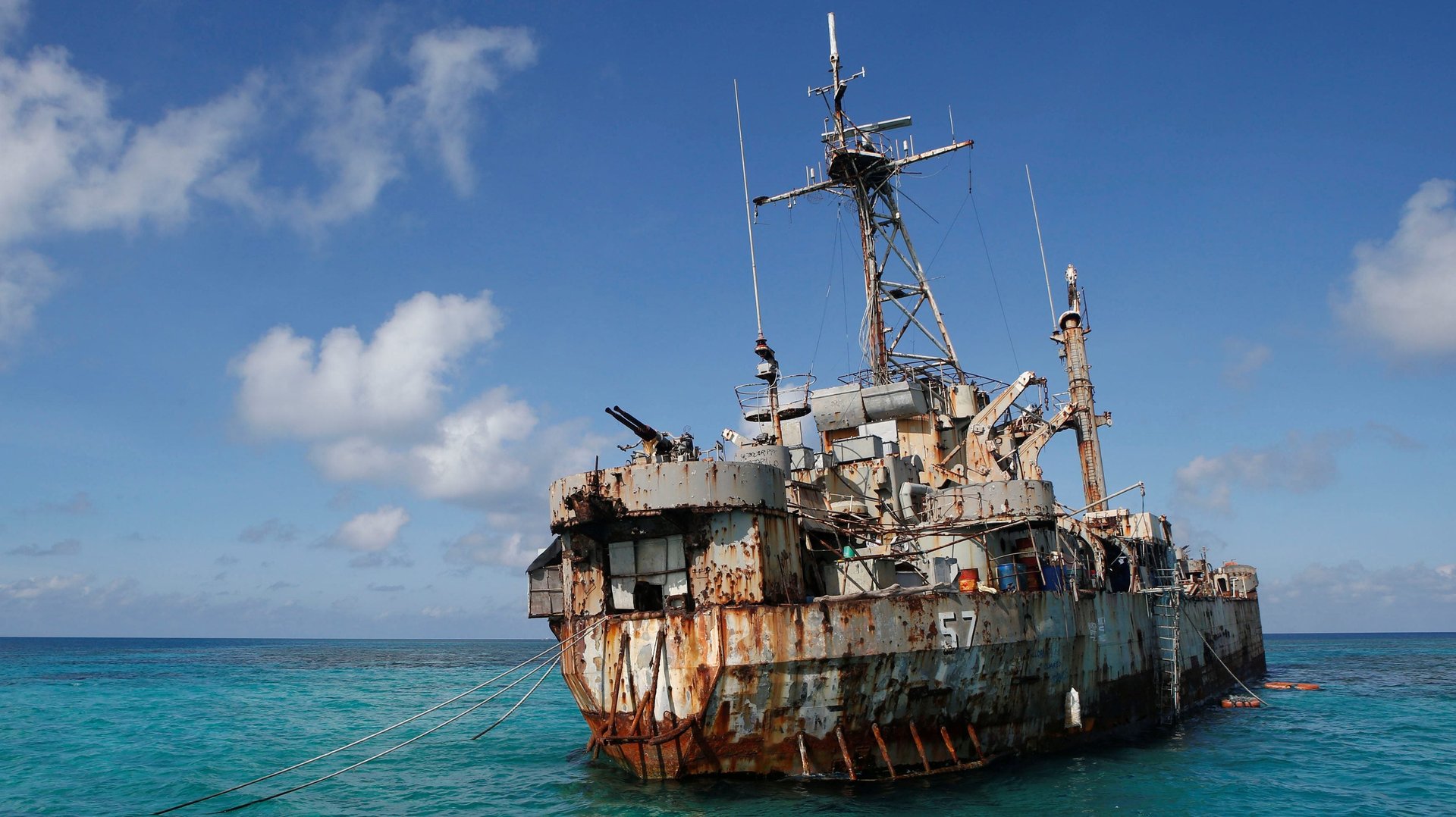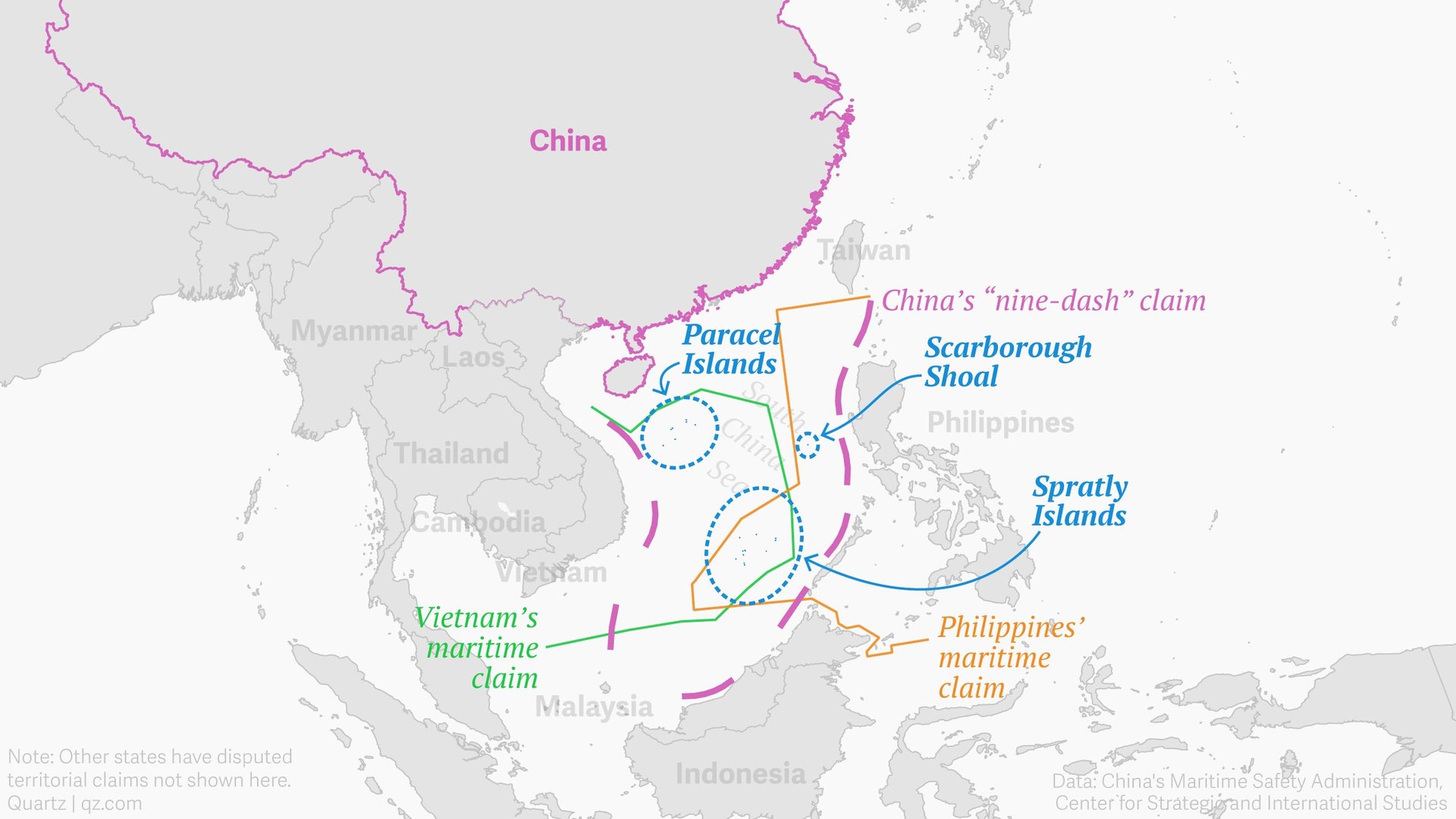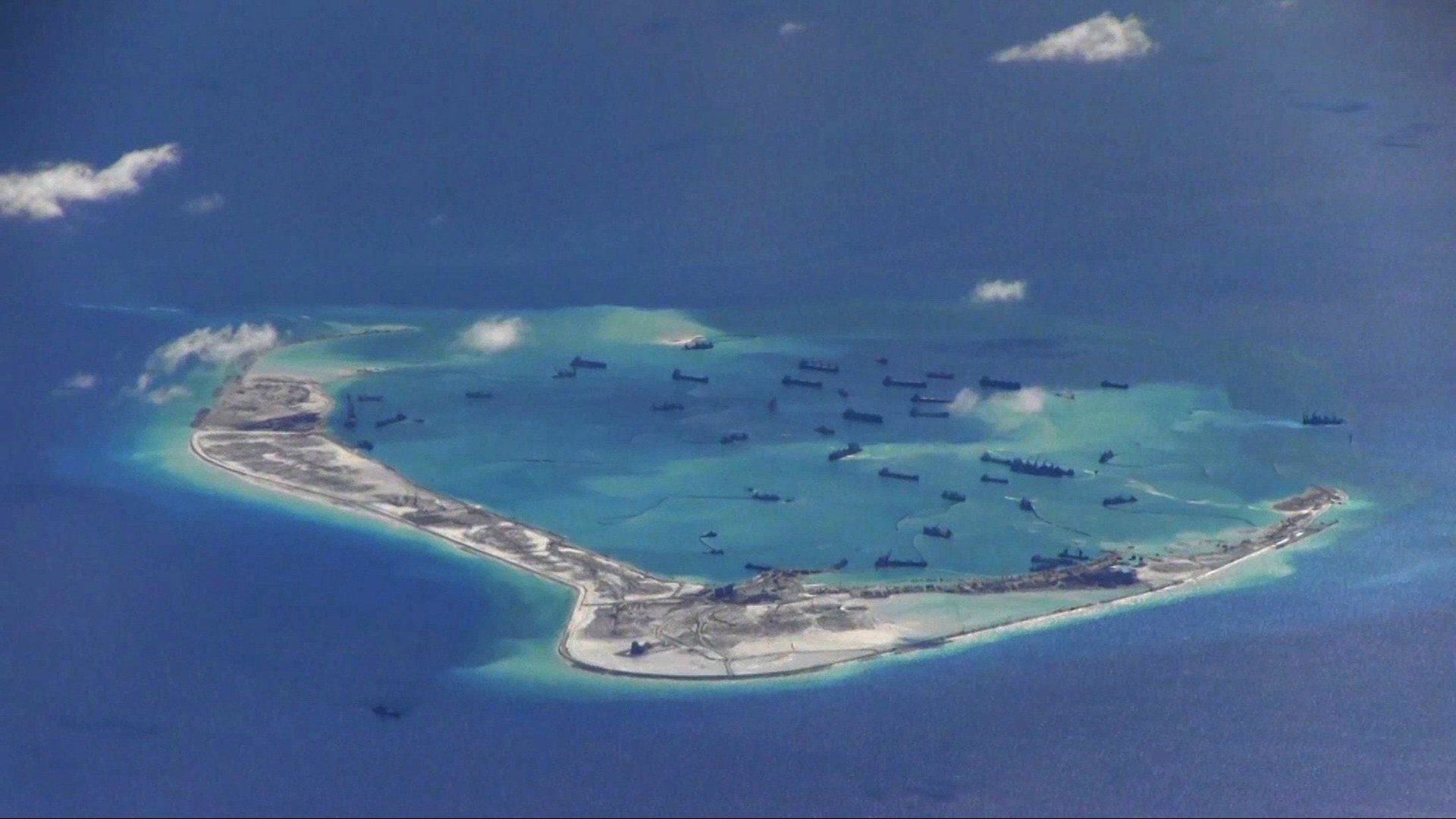These are the flashpoints to watch in the South China Sea now that China’s claims have been crushed
This week the Philippines is celebrating an international tribunal’s ruling on the South China Sea that went even better than expected. The 500-page award generally invalidated China’s sweeping territorial claims in the strategic waterway, and held that China unlawfully bullied the Philippines while acting on them.


This week the Philippines is celebrating an international tribunal’s ruling on the South China Sea that went even better than expected. The 500-page award generally invalidated China’s sweeping territorial claims in the strategic waterway, and held that China unlawfully bullied the Philippines while acting on them.
But the ruling doesn’t necessarily mean anything will change in the water, and China has vowed all along to ignore the ruling. Flashpoints that existed before the ruling haven’t gone away, and they might grow even more dangerous as either emboldened Filipinos try to assert their rights or an indignant China grows even more aggressive.
Here are some of the most volatile spots:
Scarborough Shoal
Filipino fishermen are eager to return the shoal’s fishing grounds. In recent years they’ve faced blockades and harassment by Chinese forces, which took control in 2012. But yesterday (July 13) Francis Jardeleza, an associate justice with the supreme court in the Philippines, warned that Filipinos should exercise caution when operating along the shoal, and that local authorities should set guidelines.
The tribunal did not rule on the sovereignty of Scarborough Shoal, or for that matter of any other physical formation in the sea—that was beyond the case’s scope. It did rule on the maritime rights generated by particular features. Some takeaways regarding the shoal:
- It generates a territorial sea of 12 nautical miles, but not an exclusive economic zone (an EEZ extends 200 nautical miles from the shore baseline).
- Both Filipino and Chinese fishermen have traditional fishing rights and should be allowed operate in this territorial sea.
- It was unlawful for Chinese forces to interfere with Filipino fishermen (and it would also be unlawful for Philippine forces to do the same to Chinese fishermen).
To complicate matters, the shoal and its territorial sea all lie within the exclusive economic zone of the Philippines. In that zone, the Philippines has sole exploitation rights. So within a zone where Chinese fishermen cannot fish (the EEZ), there is one where they can (the territorial sea of the shoal).
Beijing meanwhile has threatened to start island-building on the shoal, which the US has warned is a red line that China cannot cross without a forceful response. The shoal is about 200 km (125 m) from a US naval base in the Philippines. Were China to build an island and military facilities on the shoal, it’d be able to set up an extensive air defense identification zone that uses the ”strategic triangle” formed by the shoal and China’s other facilities in the Spratly and Paracel islands.

Itu Aba
Claimed by Taiwan, this is the largest “island” in the Spratlys, where various nations claim various features. But the tribunal ruled it isn’t enough of an island to generate an exclusive economic zone. Nor are any of the other islands or rocks in the archipelago.
Itu Aba (or Taiping Island, as it’s called in Taiwan) generates a mere 12-nautical-mile territorial sea, like Scarborough Shoal. Taiwan indicated yesterday (July 13) that it rejected the ruling. Taiwan and mainland China have found common ground over their opposition to the ruling. Yesterday Taiwan sent a warship to the area to assert its claims, which could escalate tensions.
Reed Bank
An Itu Aba EEZ might have given Taiwan some rights to Reed Bank, believed to hold large reserves of oil and natural gas. But yesterday’s ruling made clear that there are no overlapping EEZs concerning Reed Bank—it goes to the Philippines alone.
Legally, at least. China, of course, has other ideas, and in the past it’s prevented the Philippines from exploring for oil in the area. Should Manila feel emboldened to try again, China could again interfere, with a risk of escalation. Of course, Beijing and Manila could agree to a joint development of Reed Bank, but that might stir up nationalist anger in the Philippines.
Second Thomas Shoal
This is also part of the Spratly archipelago. The Philippines grounded the rusty old Sierra Madre vessel here in 1999 and staffs it with a few troops as a way of maintaining its claim. Resupply ships have often had to evade Chinese forces to deliver necessities to the stationed personnel.
On July 1 a spokesman for China’s defense ministry said China has the ability tow the ship away. That sounded like a veiled threat should the ruling not go China’s way—and it didn’t. China could also form a stronger blockade around the ship.
Mischief Reef
Atop this reef in the Spratly archipelago is one of the controversial artificial islands China has built (causing much environmental damage). It now has a runway and other facilities.
The tribunal ruled that in its natural state—which is what the law goes by—the reef is a low-tide elevation. That means it generates no maritime entitlements at all, not even a territorial sea of 12 nautical miles.

For the US Navy, that also means there’s no need to limit a freedom-of-navigation operation to making “innocent passage,” as if there are territorial waters to consider. In the case of Mischief Reef, there are none.
With that in mind, one US senator and member of the Senate Armed Services Committee, Dan Sullivan, is already calling for the US Navy to send a ship on a freedom-of-navigation operation to Mischief Reef within the next few weeks. Presumably the vessel could stop and make full use of its surveillance equipment right outside Chinese facilities.
The US Navy doesn’t comment on future missions, but Sullivan said he’s certain admirals are looking at all options after the ruling.